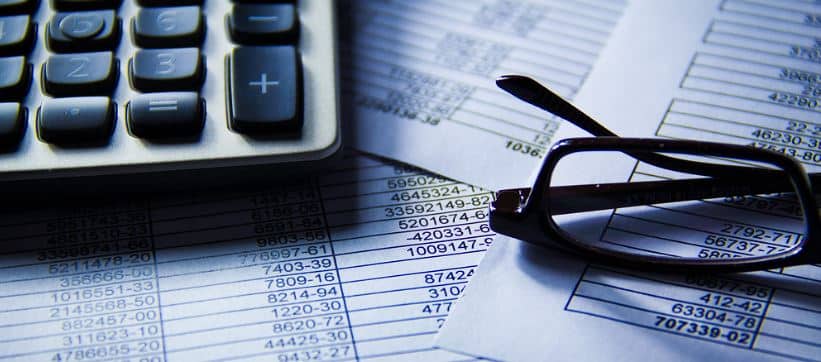There are a few different options available to you when you need to get some extra money. You may choose from personal loans, an instant payday advance, or even an Fit My Money instant tax refund loan. However, probably the first thing you’ll try to do is increase your credit card limit.

By doing so, you’ll have more money available to use in case of an emergency. Plus, if you use your credit card responsibly, you can improve your credit score over time. So increasing your credit card limit may be a good option for you to consider if you need extra money.
The credit line on the card is different for each client. Even if banks advertise promising a card with a million-dollar line, not all borrowers will be approved. How do I increase my line of credit, and what affects the bank’s decision?
It can be revolving and non-revolving. It depends on the program and the bank’s product.
A revolving line is an amount available for borrowing, which is restored after making a monthly payment or full repayment of the debt. Renewal rules depend on the bank’s terms and conditions. Within the line, the borrower can pay for purchases, and services, transfer money, and change currency.
Under the terms of some products, you can withdraw cash, but it is not mandatory. For example, there are cards with only non-cash transactions available.
A non-revolving line is an amount you can use only once. Usually, it’s a consumer loan, given not in cash but on a particular card. After you repay the debt, the organization will reset the balance. After that, the card is closed; you can’t use it again.
How the Line Is Set
It is the amount the bank can lend to the borrower with or without interest if it is a card with a grace period.
Two advantages of a line on cards are:
- Renewability. the line is renewable after the borrower pays off the debt.
- You can spend as much as you need within the line. You don’t have to spend the entire amount on one purchase; you can pay as long as the available limit remains.
Banks set the line individually for each customer, considering:
- Salary size. The higher the income, the more significant the amount the bank is willing to approve.
- Length of service. The bank considers both complete employment history and the last job — clients who don’t stay in one place for a long time cause no confidence in the bank.
- Documents. The more guarantees of solvency the bank receives from the potential borrower, the higher the limit will be approved.
- Loan history. Bad or zero histories are a reason to approve a lower limit or refuse to issue a card.
- Other parameters that the bank considers significant. For example, some banks pay attention to the marital status or the presence of dependents of the potential borrower.
- The length of your employment, income, documents, and history quality also impact the credit line you are approved for.
Maximum Line. In advertisements, banks often indicate a maximum line amount but only approve it for “perfect” borrowers. In the best position are payroll customers or those who are already working with the bank, such as holding a deposit or using a large money brokerage account. To such potential borrowers, the bank offers the most favorable conditions.
Minimum line. It is set for new customers with low income or even no income. Also, a small line can be set due to problems in the previous loan history. But this does not mean that this amount will remain forever. For example, if you use the card often and repay the debt on time, the bank may increase the limit.
If the potential borrower has many debts, and half of his income or even more goes to repay them, the bank may refuse to issue a card even with a minimum limit. Sometimes, borrowers can spend all their money on things that they don’t even need, for example you can buy really expensive presents for your family and use Creative Packaging Ideas. But the main point is that you will spend your whole income and then you will need to borrow money that can make your limit lower.
Who Decides on the Limit
The customer can’t change the line himself. Instead, the bank decides to increase or decrease the maximum available amount on the card. The procedure is different for each bank. In some, it may be an automated system. In others, a bank specialist assesses whether you can or cannot increase the limit. Most banks use both methods at the same time.
Banks use automated systems to avoid human error. The software collects information about the borrower, his rating, and the activity of using the card and conducts a scoring analysis on the available data. Bank employees do not interfere in this process. They only “help” in making the final decision.
If there is a technical failure, the specialists cross out the errors. In some cases, credit department employees may manually decide to change the limits.
You should not contact bank managers to change the line or influence the final decision. Bank employees can only advise the borrower, suggesting ways in which the bank will understand that the client is reliable.
You can find out the size of the limit in the bank’s mobile app or your cabinet through a web browser. To do this, select the desired card and click “find out more about the debt.” You can see not only the size of the line but also the amount of the monthly payment, the total amount of debt, and the dates of the reporting period.
How to Increase Loan Limits
On average, it is not necessary to ask for a credit line increase before three months of credit card use. Banks review card terms every three months or six months. During this period, it is recommended that you
- Use the card regularly. Pay for online and offline purchases with it.
- Make the mandatory payment on time.
- Notify the bank in time about changes in personal data. Changing your cell phone number, place of residence, and family name is essential.
- Notify the bank if you have financial difficulties, for example, losing your job. The bank is interested in getting its money back, so it can make concessions and postpone the due date or revise the monthly repayment amount.
- Keep track of your debt load. If you have several small loans, try to pay them off as soon as possible. You can connect all your loans into one. The more you owe, the less likely the bank will increase your line.
- Use other bank products as well. You can, for example, open a deposit, an impersonal bullion account, an individual investment account, or an integrated product that combines several banking services at once. Such customers trust the bank more because depositors and investors have savings, which guarantee the borrower’s solvency.
- Before applying for a card, check your rating. The history will help you assess the chances of approving a loan or increasing the available amount.
Are There Cards with Zero Line of Credit?
When processing, banks often set a minimum amount. If the cooperation is booming — it will increase over time. But if the line is not approved, the card is not issued and denied.
Sometimes zero line cards are called debit cards. You can’t borrow money on them, but you can add funds to the card and use them to make purchases.
Different point — zeroing the line at the initiative of the bank. Such situations happen. Most often, the reason lies in the borrower’s behavior — violating the terms and ignoring the bank’s attempts to get in touch. It is enough to fulfill all your obligations in full and on time to avoid this.
In Conclusion
The bottom line is that banks use a variety of methods to determine credit limits, and it’s important to be aware of all the factors that go into this decision. Understanding how your credit limit is determined can help you manage your finances more effectively and avoid getting into debt. If you have any concerns about your credit limit, be sure to contact your bank or financial institution for more information.



